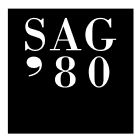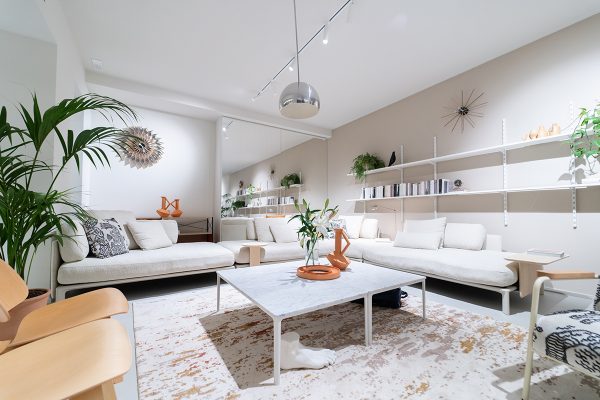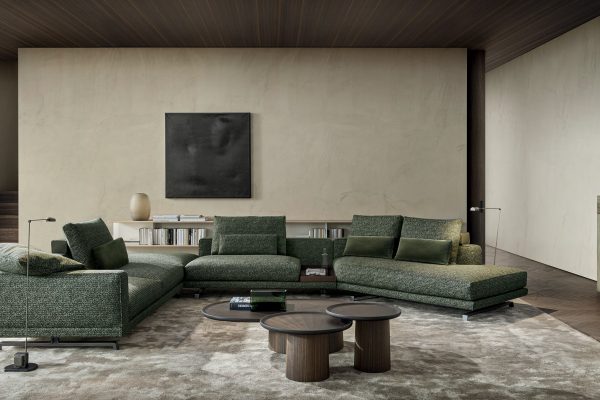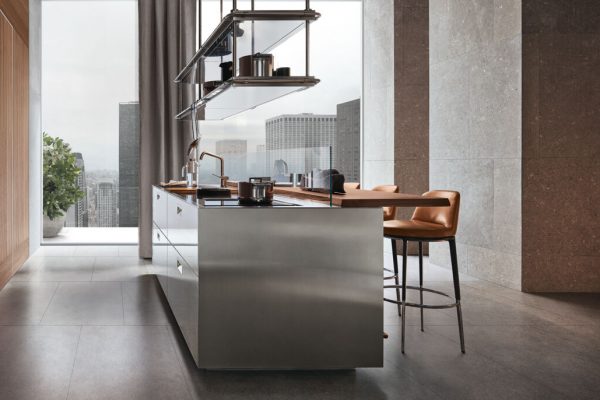Vitra’s innovative design serving airports, stations, clubs and public spaces
Improving the environmental quality of homes, offices and public spaces through the use of design.
It is the mission that has always been the hallmark of Vitra, the company founded in the 1950s in Weil am Rhein, Germany, by Willi Fehlbaum, a furniture store owner in nearby Basel, Switzerland.
A history, that of Vitra, full of prestigious collaborations with the most important personalities of twentieth-century architecture and design. It all began when Fehlbaum accidentally discovered a Charles and Ray Eames chair in a New York storefront and fell so in love with it that he bought the rights to all of the creative couple’s work.
After a fire destroyed the Vitra factories in 1981,English architect Nicholas Grimshaw was called in to design a new factory. Next to the aluminum hall, ready for production only six months after the fire, another production facility was built in 1986 byPortuguese architect Álvaro Siza.
Then in 1989 it was Frank Gehry ‘s turn to design another building next to the first two. Gehry himself also built the“Vitra Design Museum,” originally intended to house the private furniture collection of Rolf Fehlbaum, owner of Vitra.
Collaboration with leading figures in contemporary architecture has continued, so much so that in 1993 Iraqi archistar Zaha Hadid revisited the rooms of a fire station that now houses a Design Museum collection of chairs.
In the same year a conference pavilion designed by Japanese architect Tadao Andō was built, his first work outside Japan.
In 1994, Vitra’s administrative staff moved to new headquarters (also designed by Frank Gehry) in nearby Birsfelden, a few kilometers from Basel, Switzerland, while Alvaro Siza added the shop building to the Weil am Rhein site.
It was in the same location that a geodesic dome designed by U.S. architect Buckminster Fuller was installed in 2000, built in 1975 and now used as a space for events and exhibitions, while a gas station also arrived in 2003 from a design by Jean Prouvé, a French architect and designer.
By combining technical and conceptual expertise with the creativity of contemporary designers, Vitra continues to push boundaries and question the status quo.
The products in its collections are developed through a lengthy design process that combines engineering excellence with the creative genius of some of the world’s best-known designers.
The goal is to create interiors and complements that are both functional and inspirational, a goal also shared by SAG’80, which has chosen Vitra as one of the showroom’s flagship brands. Among the fundamental principles underlying the company are durability and aesthetics, inescapable characteristics found in all products, from contemporaries to the great design classics of Eames, Prouvé and Panton.
Vitra’s strength at present also lies in having perceived, earlier than other companies, the radical transformation taking place in public spaces that are increasingly becoming work spaces. Thanks to new communication technologies, people can now work in hotel lobbies, cafes, airports or even parks.
And conversely, offices are becoming public spaces: many companies are creating open and inspiring places where employees-or outside visitors-can relax, hold meetings, or spend the day working.
As work is no longer tied to a specific location, new behavioral patterns have developed, which are gradually finding their way into the widespread office that can be anywhere.
Airline, the flexible seat that optimizes airport space
Anyone who has passed through an airport at least once in his or her life will have appreciated the comfort and beauty of Airline, the seating system for waiting areas created by Foster & Partners for Vitra.
All the DNA of Norman Foster, renowned architect of major international airports and an expert in airport interior design, can be seen in this design project.
The basic idea is to make a sturdy frame consisting of an aluminum beam supported by die-cast aluminum legs, on which seating elements, armrests and tables are mounted. Thus was born Airline, a solid and easy-to-clean system that allows you to optimize and give flexibility to the space. Assembly is simple, requiring only a single wrench, which also simplifies reconfiguration as needed. The design is understated and elegant, and combines the superior durability of its construction with stylistic longevity.
Alcove Highback Work, the sofa becomes an intimate space in which to isolate yourself
Creating the “room within a room.” It is a concept that Vitra has pursued intensively through its collaboration with designers Ronan and Erwan Bouroullec, realizing the idea of mobile micro-architectural elements.
The concept that defines the Alcove family of products-creating places of shelter and insulation-is particularly pronounced in the Alcove Highback Work: hidden within its high side and back panels, in fact, the user is protected.
The sofa shields users both visually and acoustically from their surroundings, forming a retreat space. With its integrated tablet desk, storage box and cable entry, it is a seat that provides a flexible and private workspace even in the open-plan office, perfect for individual activities requiring concentration and small meetings.
The different models of the Alcove family can be variably combined, thus offering a diverse range of possibilities for organizing open space without having to install fixed structures. This enables the creation of cohesive central areas, Meet & Retreat zones, with unified aesthetics, great flexibility and functionality.
Lounge Chair by Charles and Ray Eames, the timeless aesthetic of a design classic
High comfort to the nth degree and refined materials. These were the ideas behind the more modern version of Charles and Ray Eames’ Lounge Chair for Vitra, the English club chair that is one of the design icons of the 20th century.
The Eames wanted to design a version that would be lighter, more modern, and more comfortable than the traditional one, with ample proportions that would bring together absolute comfort and the best quality of materials and workmanship. With this 1956 design, the creative pair thus set new stylistic and functional standards, and the armchair continues to be made in the same way: the seat and back are made of curved plywood, finished with different types of exposed veneer, and the cushions are removable.
The Lounge Chair is available in two sizes and different combinations of leather upholstery and wood shell. The base of the chair is made of aluminum-coated wood, with a five-blade support.
There is also an all-black version of this chair, while the white leather and light wood version has been available only on certain occasions over the years, as a limited edition. The Lounge Chair can be ordered together with the Ottoman footrest element: in this case the two wooden shells will be produced to match the wood grain.
Soft Work, hybrid seating system for the distributed office
Spaces that contaminate and offices that can be anywhere. With this in mind, Vitra and designers Edward Barber and Jay Osgerby conceived and developed the new Soft Work seating system, combining expertise from the home, office and public sectors.
Instead of creating a work environment centered on desks with peripheral couches, Soft Work has developed into a system in which tabletop workstations are centered around a landscape of seating.
Barber and Osgerby see this as a long-term development:
The workstation is going the way of the dining room; it is disappearing as an archetype. The desk has had its day. With mobile technology you need a place to sit from time to time or a comfortable place to relax. This is our belief
Soft Work offers a versatile platform for both individuals and teams. In addition to ergonomic seating options, users will also find practical side tables, power outlets and charging stations. Because of its modular concept, it can be easily assembled into different arrangements, allowing architects to structure the interior spaces of a building, create specific focal points or define flexible public areas.
All functional elements are seamlessly integrated into a refined overall aesthetic.



